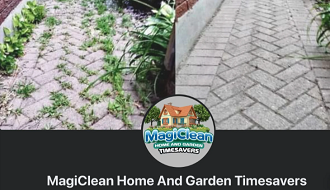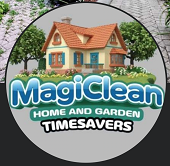Mustard Vegetation Bloom in Simulated Moon Soil – The Unconventional Gardener
Header picture: Senior scientific affiliate Dr György Barkó with simulated lunar regolith. Picture credit score: MATE.
In an experiment on the Hungarian College of Agriculture and Life Sciences (MATE), mustard vegetation have grown, flowered and efficiently set seed in simulated lunar soil.
In response to the MATE press launch, earlier analysis at NASA has advised an inventory of the vegetation more than likely to outlive in lunar regolith. It takes under consideration many traits for the best vegetation, which embrace meals worth, a low water requirement, higher-than-average oxygen manufacturing and the power to take away unstable natural compounds (VOCs) from the surroundings. Sage, arugula (rocket) and mustard have been a few of the most promising candidates. Throughout their investigations, the MATE consultants confirmed that mustard stood out from that crowd.
Their mustard seeds efficiently germinated and grew, even with minimal water addition within the lunar soil – an encouraging end result.
“It may be mentioned that it’s a enormous discovery that, in distinction to earlier hydroponic plant cultivation, it was attainable to develop vegetation in soil, and even in lunar soil, with the assistance of some drops of water. We’ve now reached the purpose the place the seeds don’t want a lot assist to germinate. Minimal water may also be produced by breaking down present minerals, similar to copper sulfate, which, when heated, releases water.”
Senior scientific affiliate Dr György Barkó

The MATE researchers additionally highlighted that rising vegetation on the Moon would require a closed surroundings that protects towards deadly radiation – a cave, maybe, or a tunnel dug right into a mountain. They’ve created a particular check surroundings for vegetation that makes an attempt to recreate these situations, by way of lighting and the quantity of irrigation, though it doesn’t recreate the low stress discovered on the Moon’s floor.
The purpose of the analysis just isn’t solely to permit vegetation to germinate and develop, but in addition to make the method sustainable by producing seeds. In these experiments, the mustard vegetation produced three seeds, the primary seeds grown beneath these situations. These seeds are at present being analysed on the Agricultural Science Analysis Middle of ELTE HUN-REN, with the check outcomes anticipated by the tip of the 12 months.
“Additional necessary questions have to be examined in relation to the three germinated seeds, similar to, for instance, whether or not they could take up poisonous heavy metals from the soil, and subsequently stay appropriate for human consumption.”
Dr György Barkó

One other necessary query the researchers are investigating whether or not any modifications happen to the seeds when they’re launched into area and whether or not they stay viable after the journey.
Dr Barkó and his group are getting ready for a particular experiment in February 2025. With the assistance of a Falcon 9 rocket, they plan to ship mustard seeds into area after which return them to Earth after finishing an orbital path. Within the experiment, the researchers will look at the consequences of acceleration in the course of the launch and the radiation in the course of the spaceflight. The experiment will present whether or not mustard seeds are appropriate for a visit to the Moon, which takes a number of days.
Assuming that the mission goes nicely, and the payload of seeds returns to Earth safely, we will count on some solutions round April 2025.
Authentic supply: A világon elsőként életképes magokat teremtek a MATE holdtalajban elültetett mustárnövények
You might also like:

Want extra space? Take heed to the Gardeners of the Galaxy podcast!
Until in any other case said, © Copyright Emma Doughty 2024. Printed on theunconventionalgardener.com.
When you loved this submit, please contemplate supporting my work. I’ve a subscriber-only Patreon for area plant fanatics, or you might simply purchase me a cup of tea:
Many thanks!




















